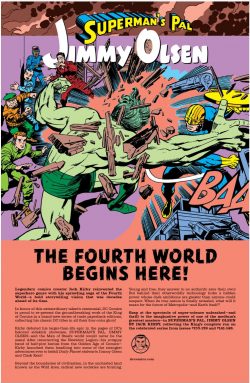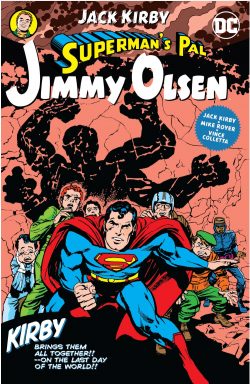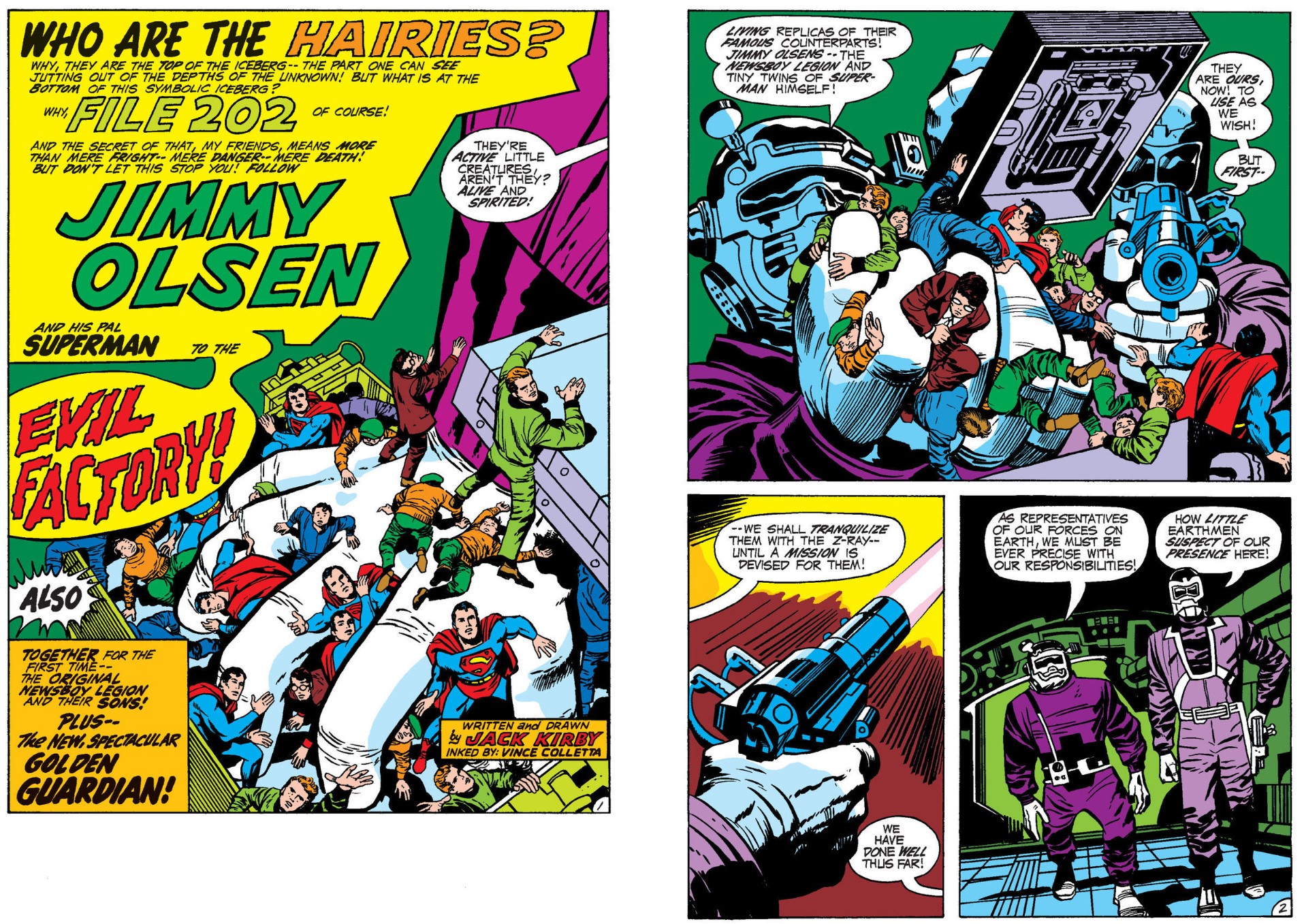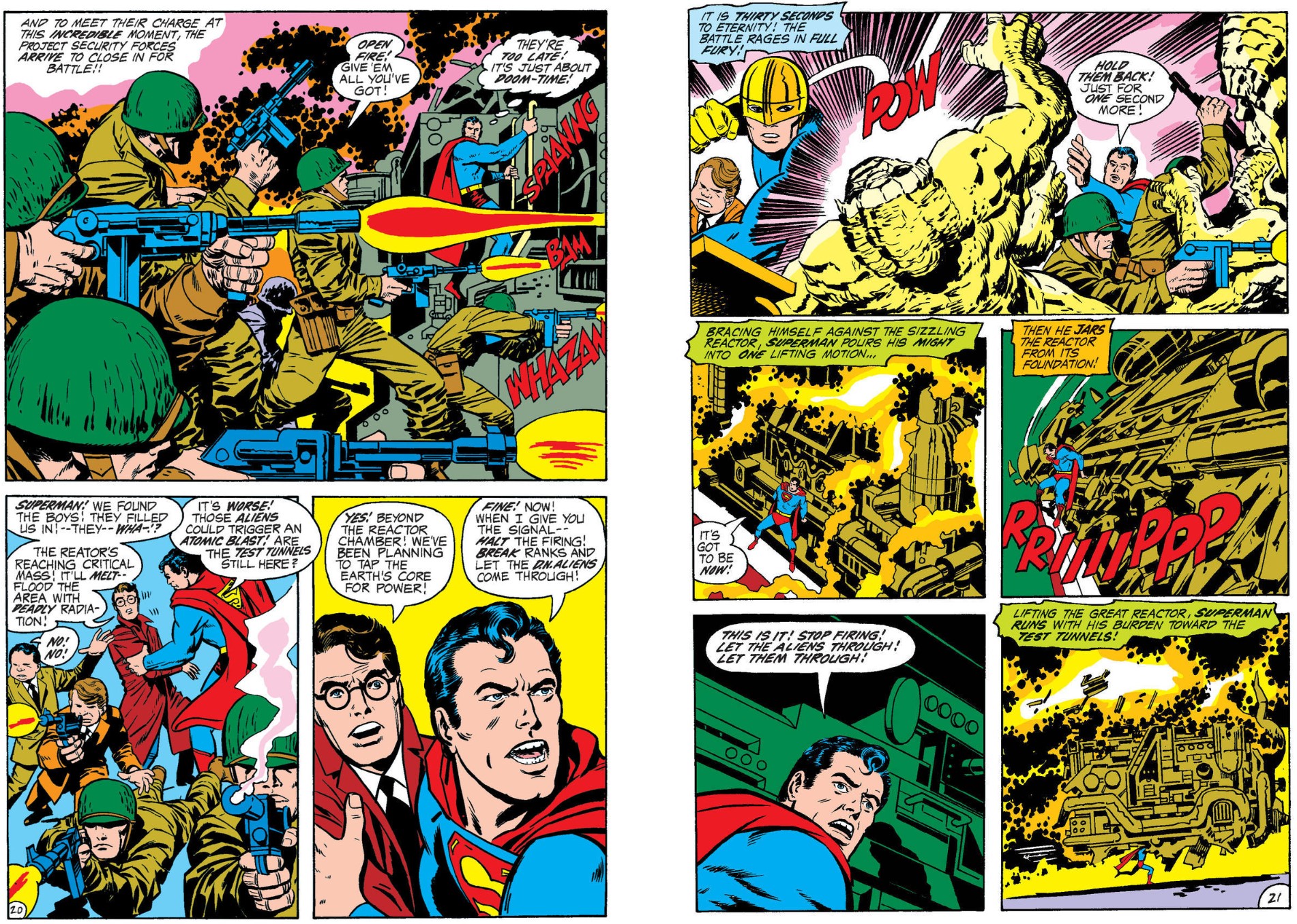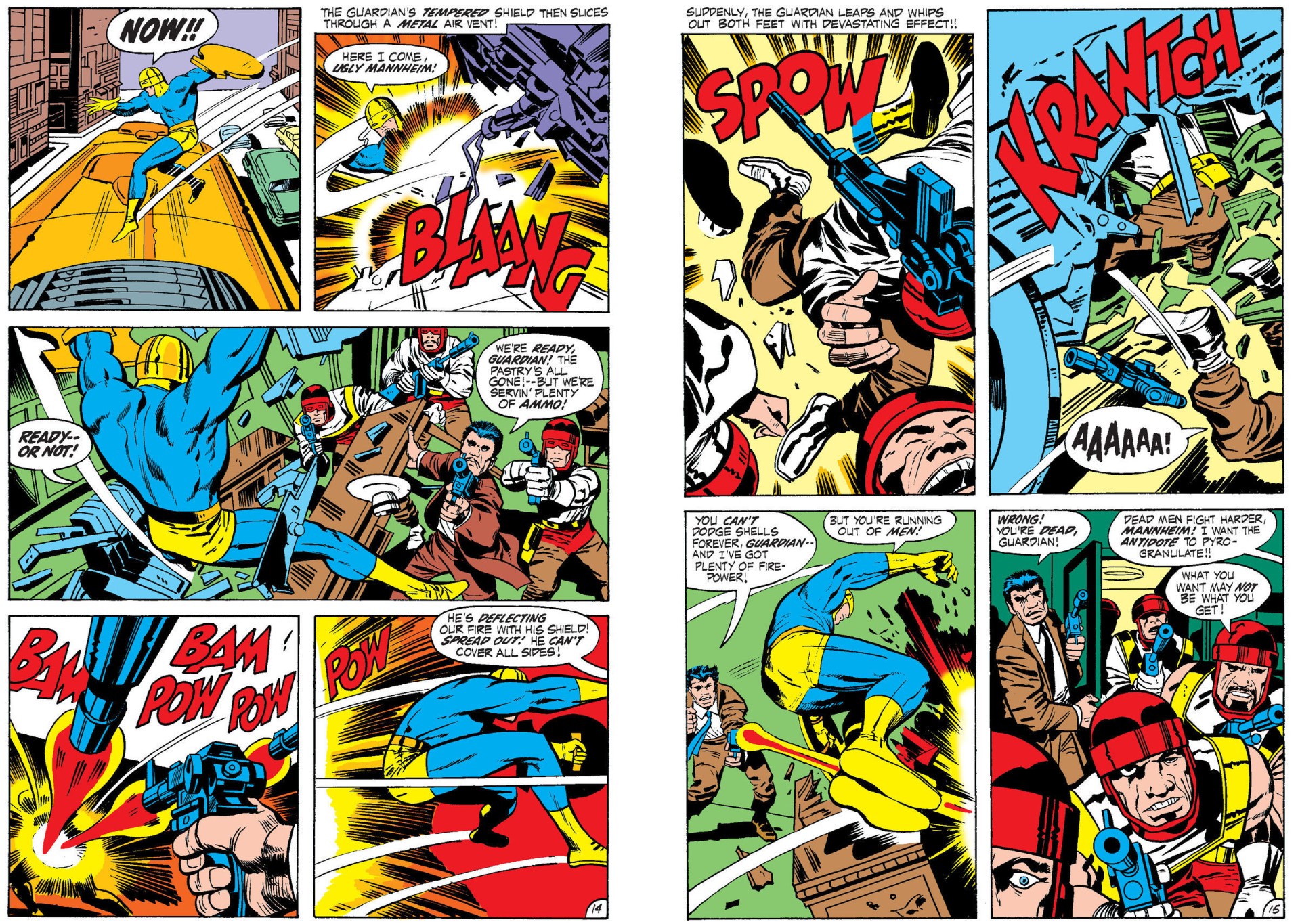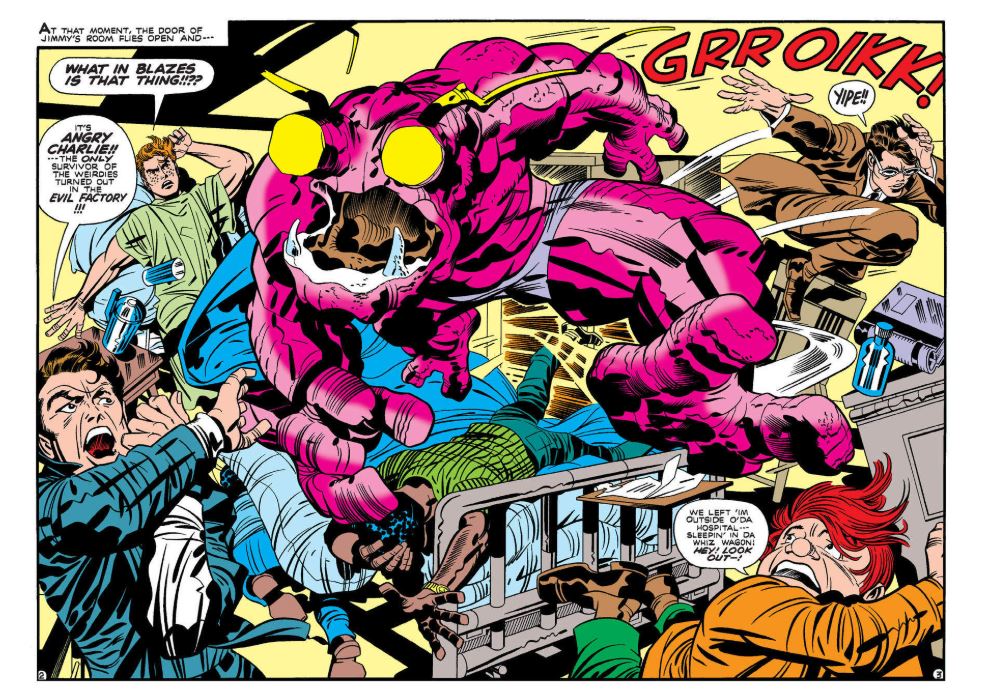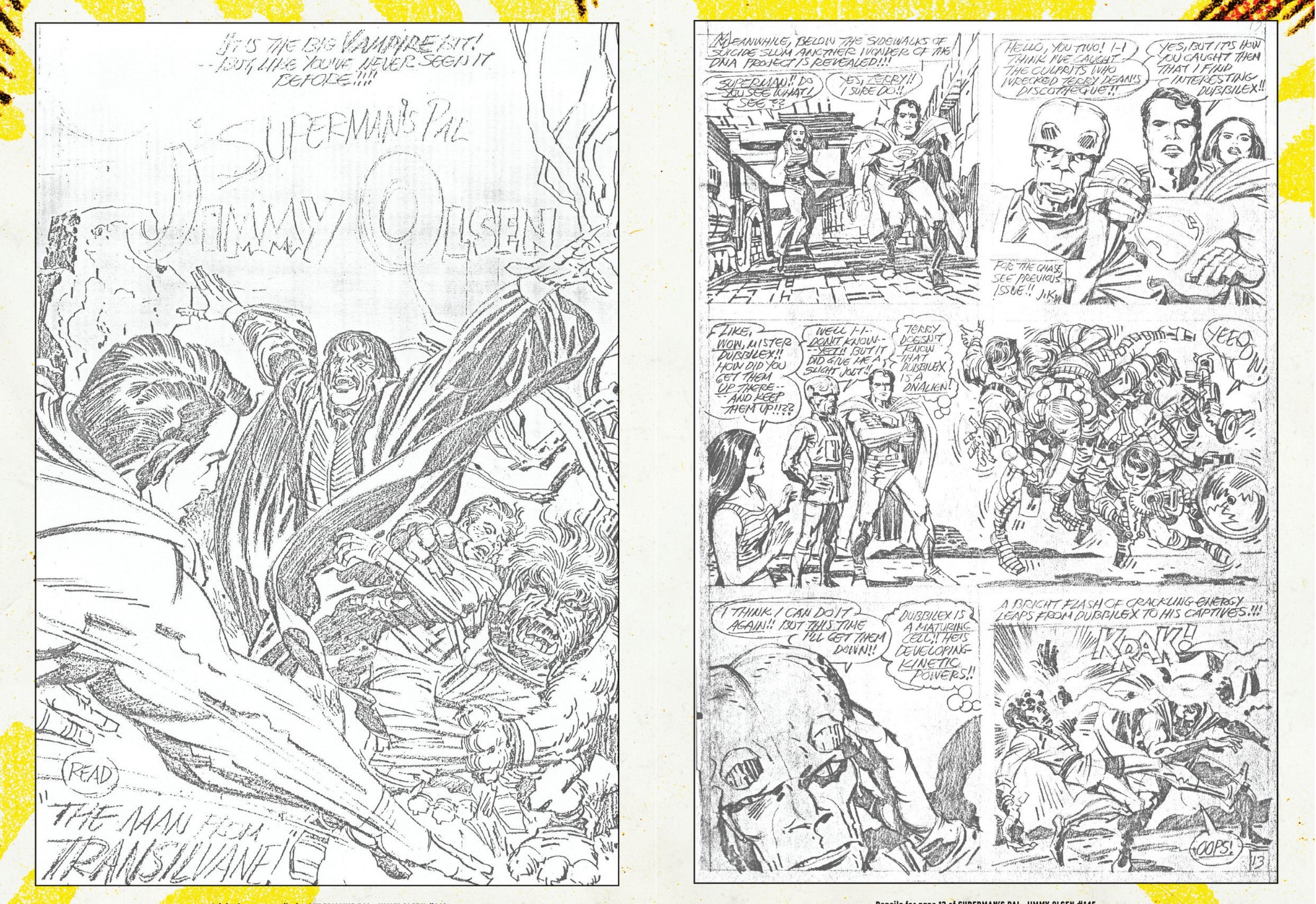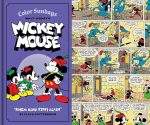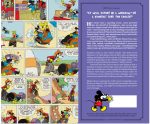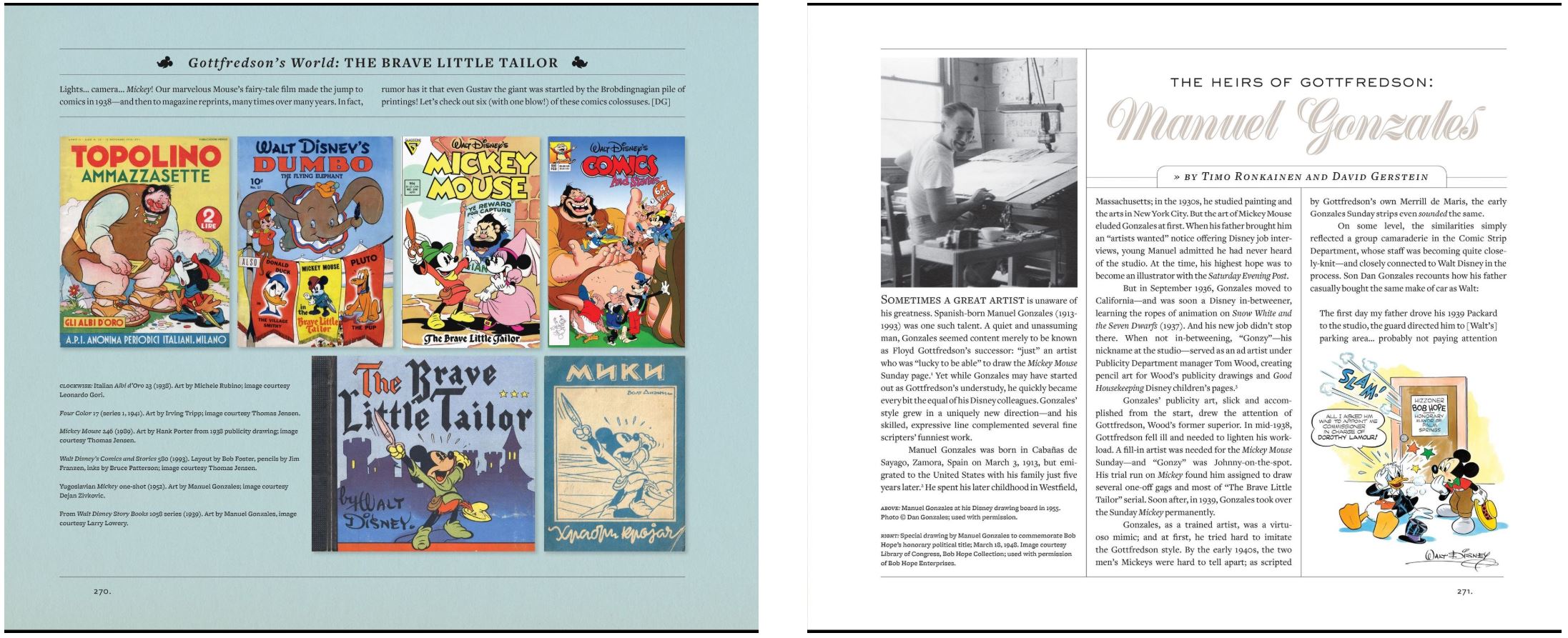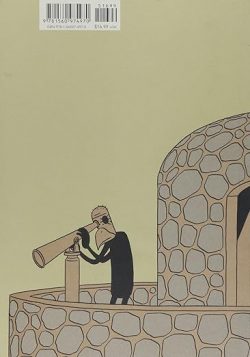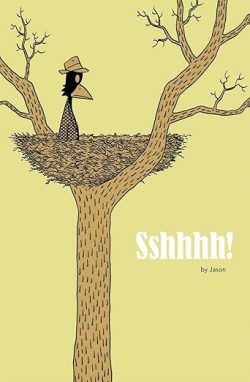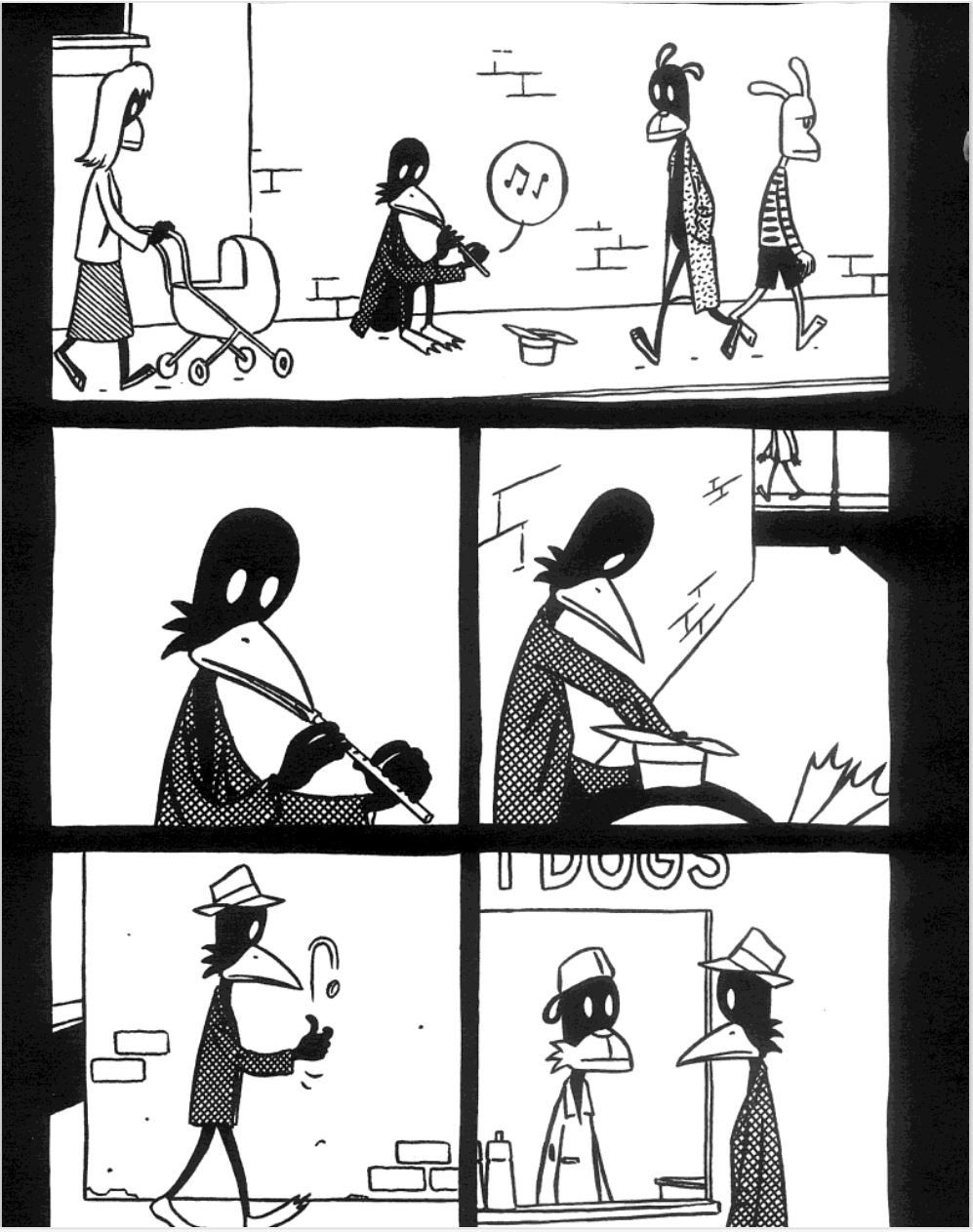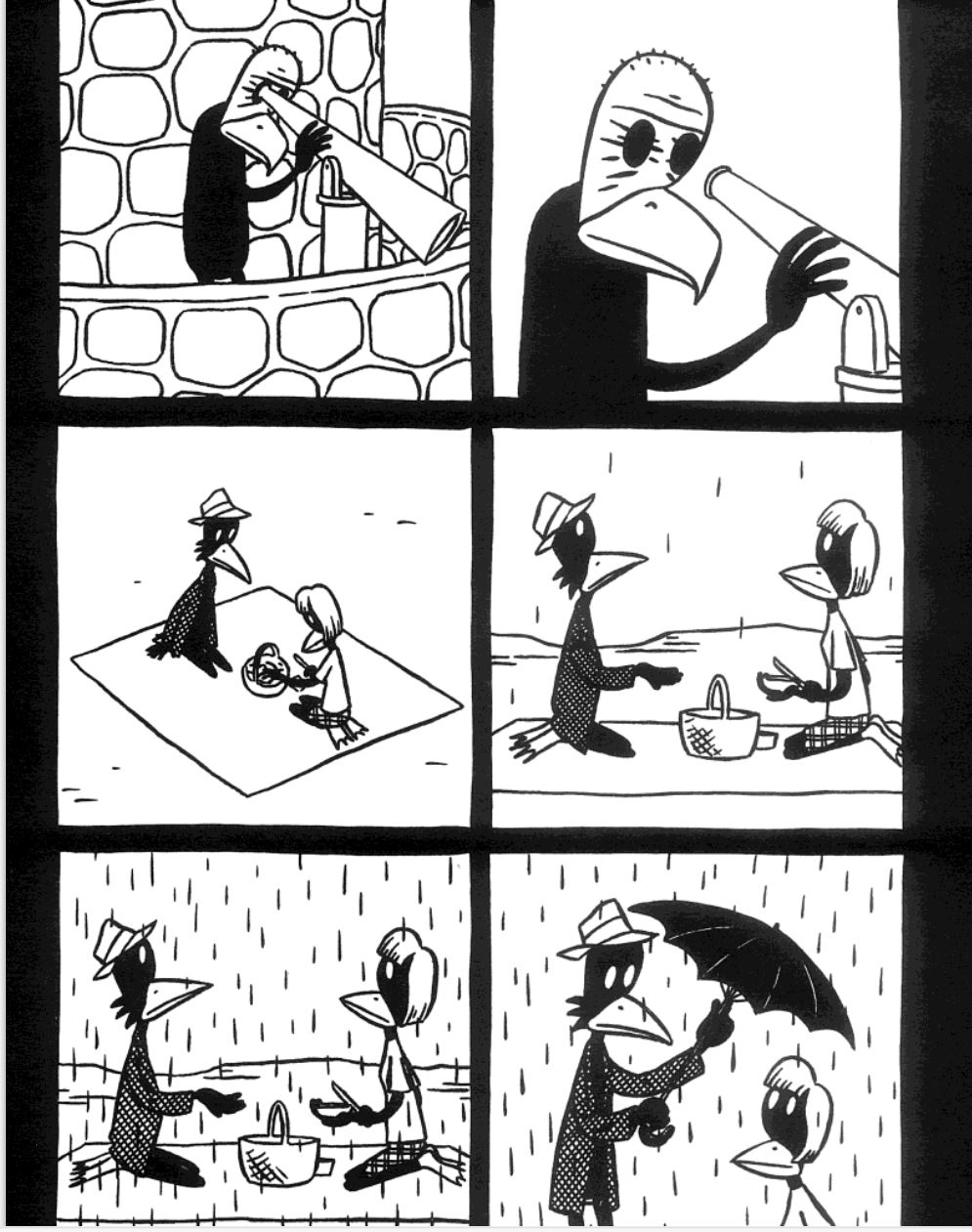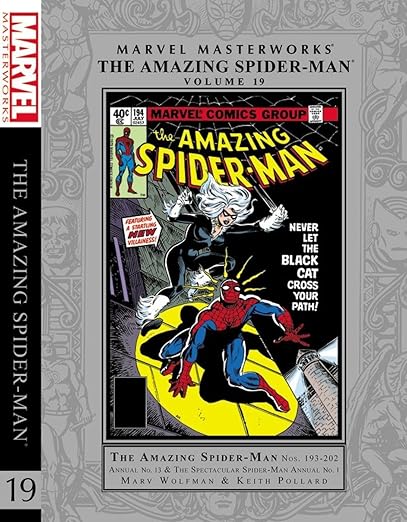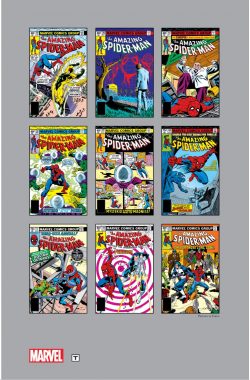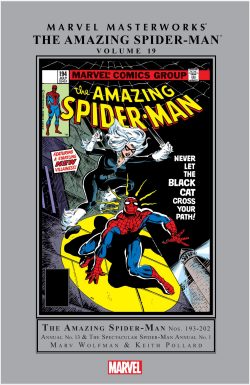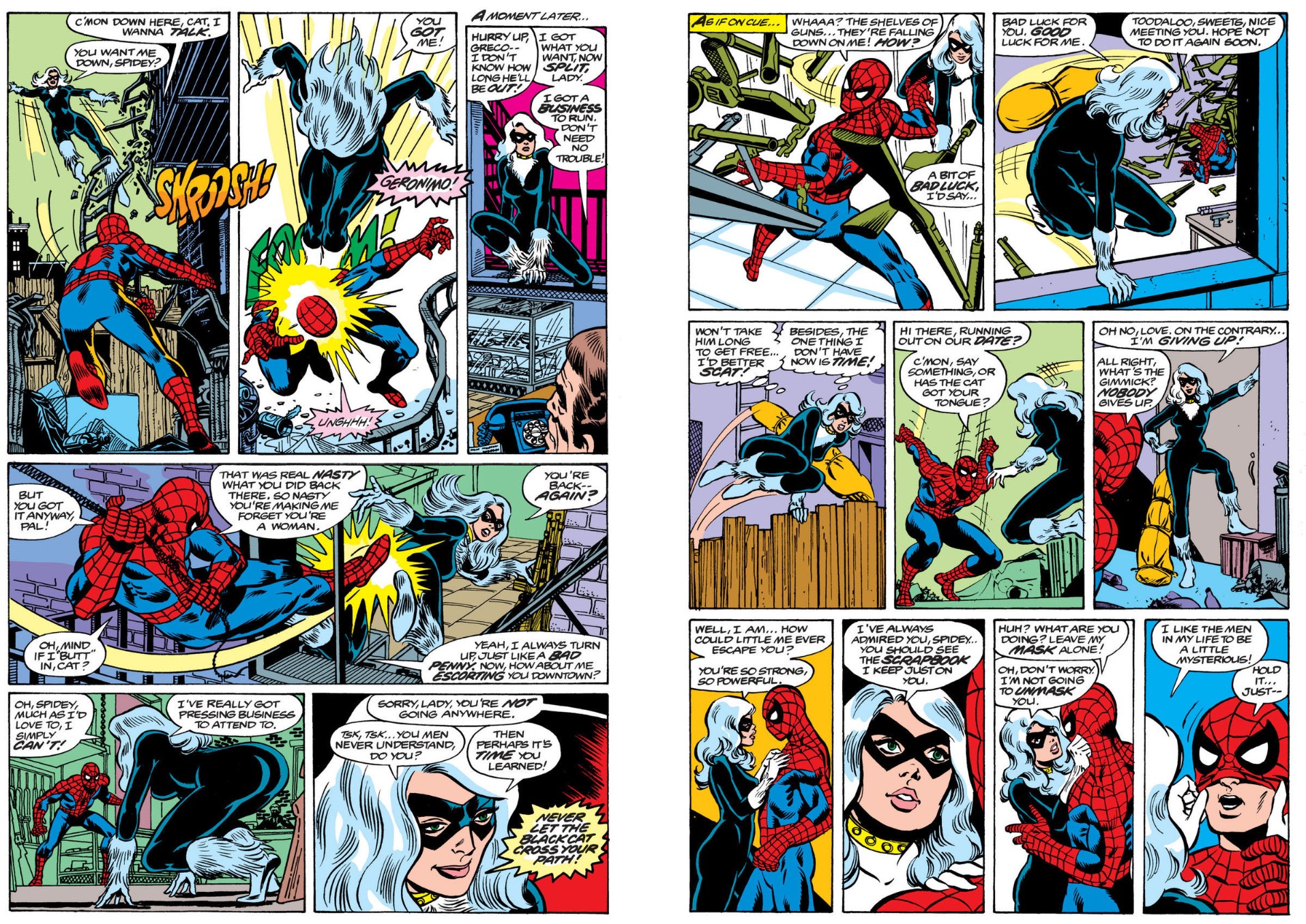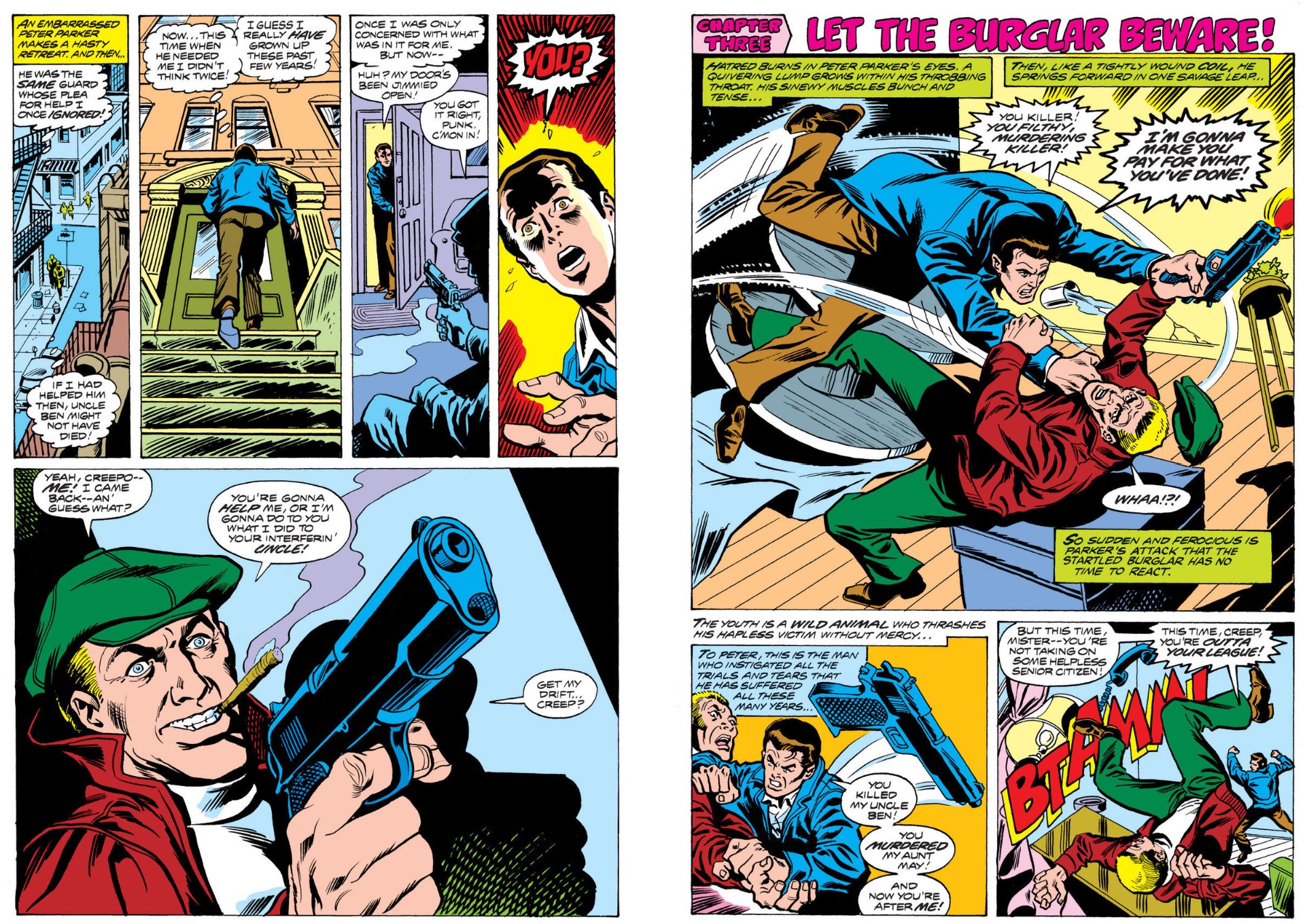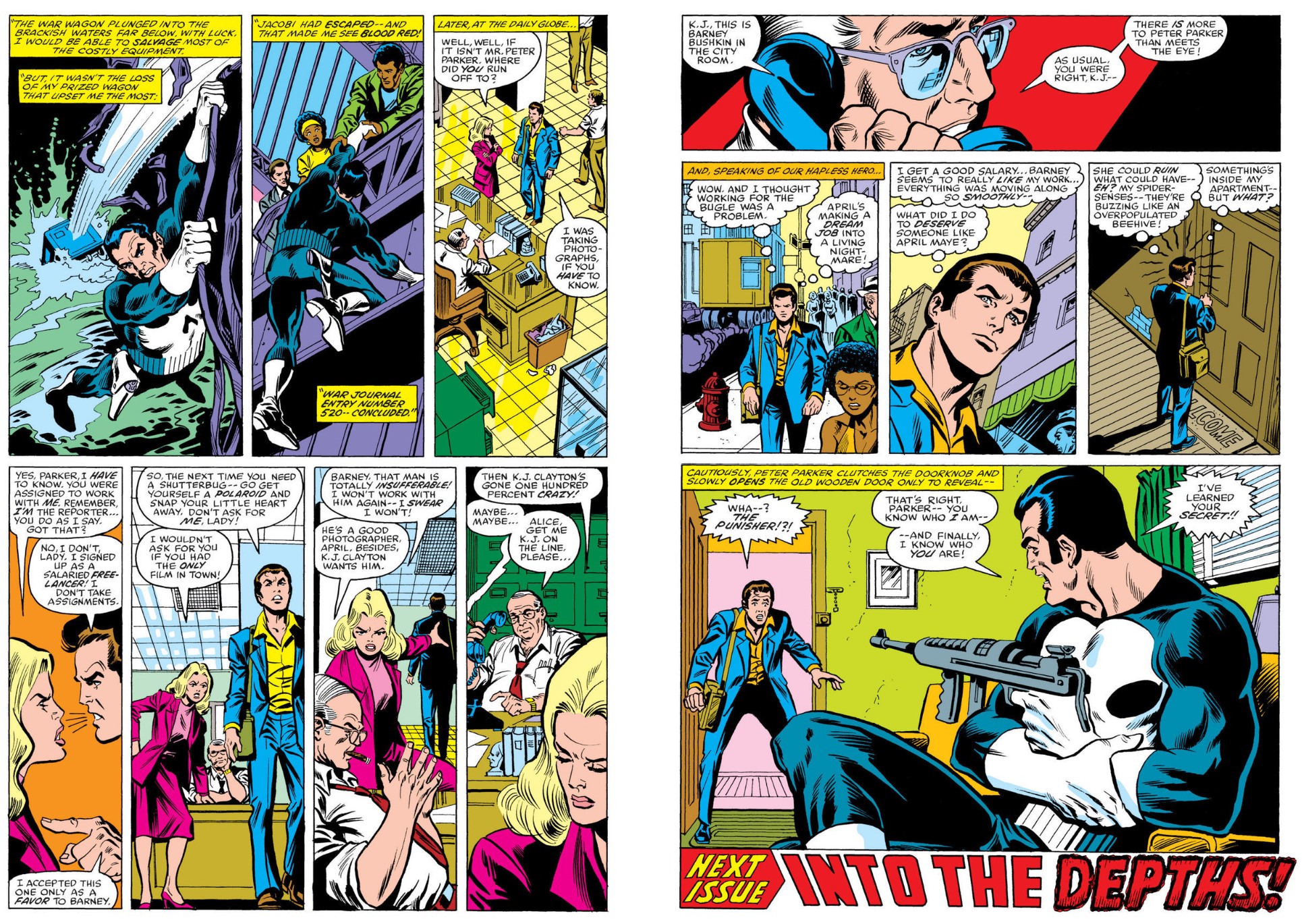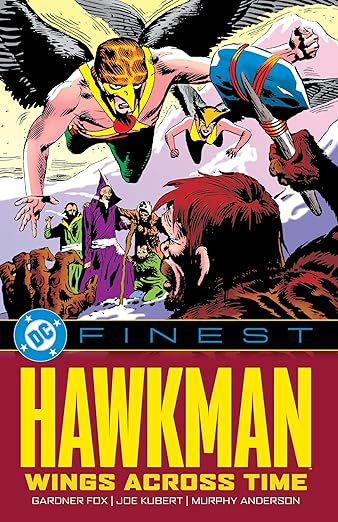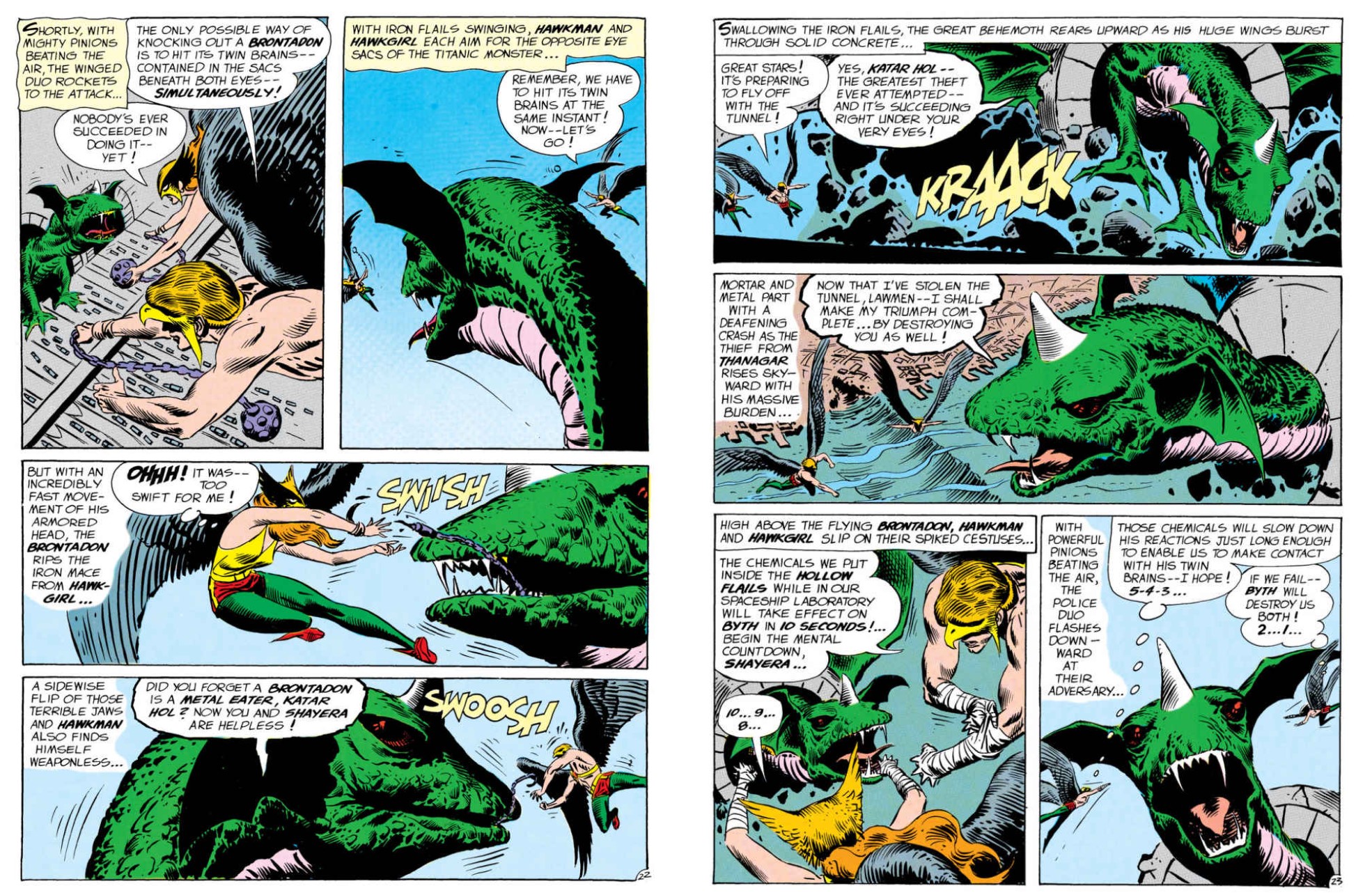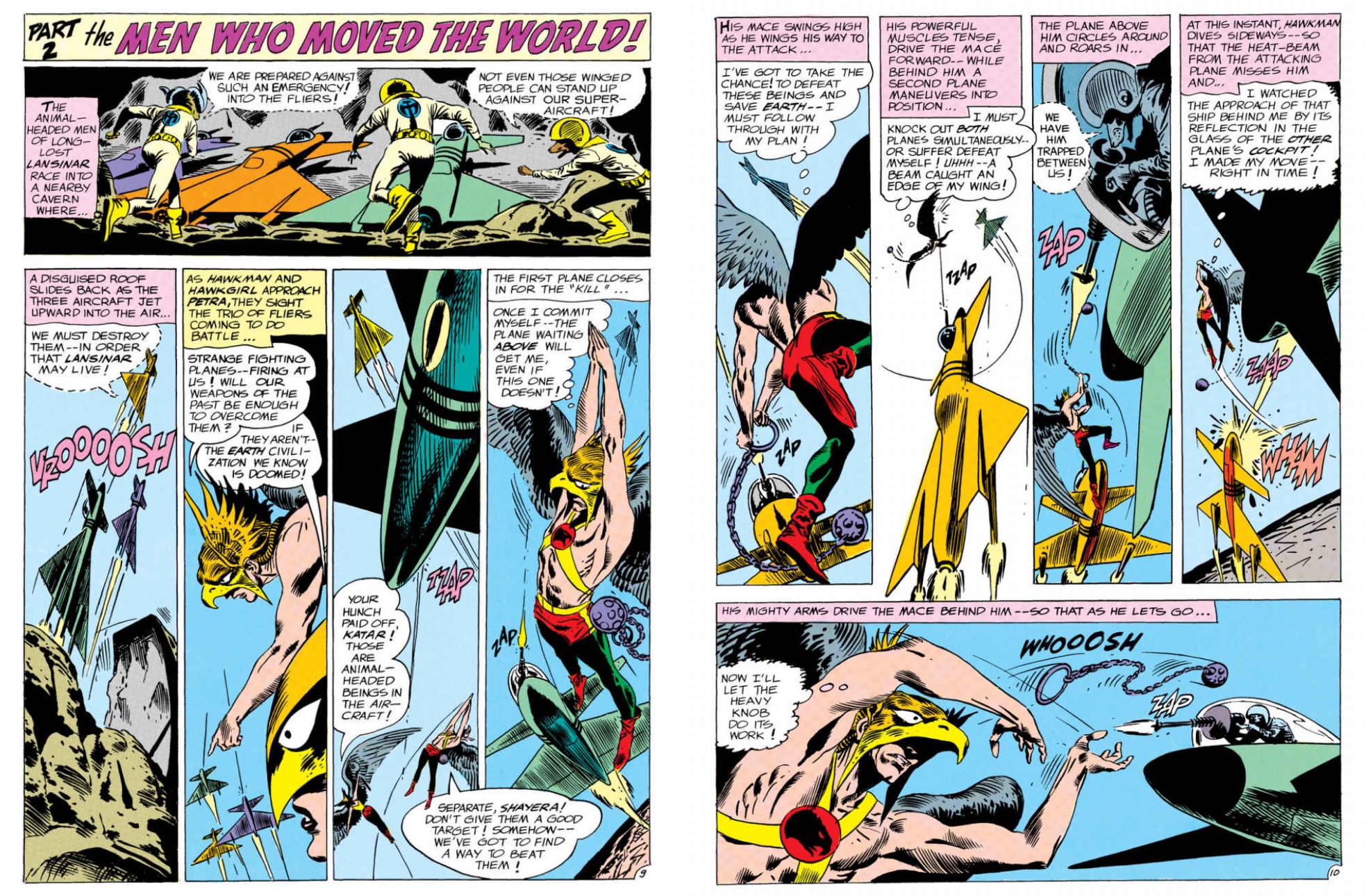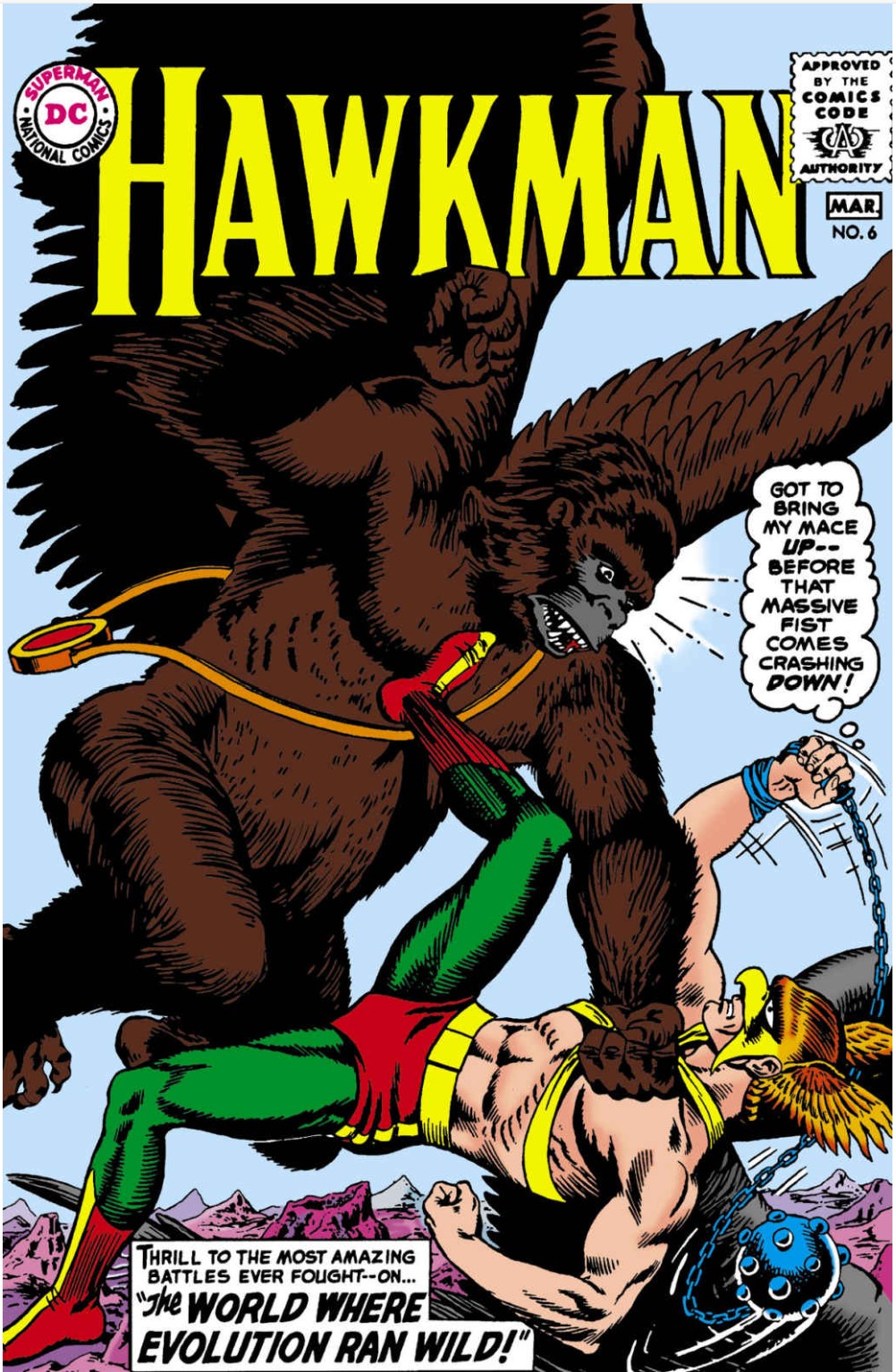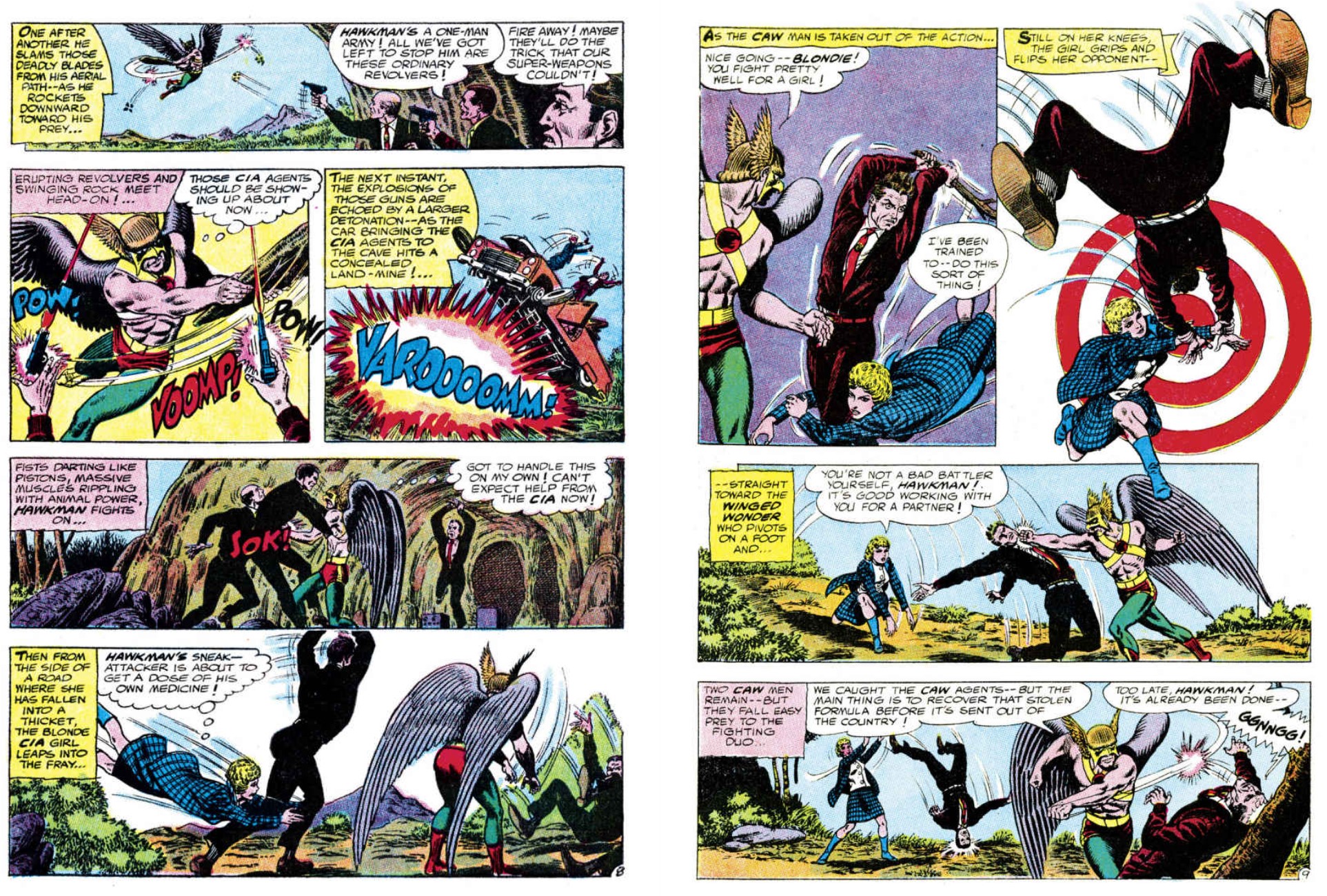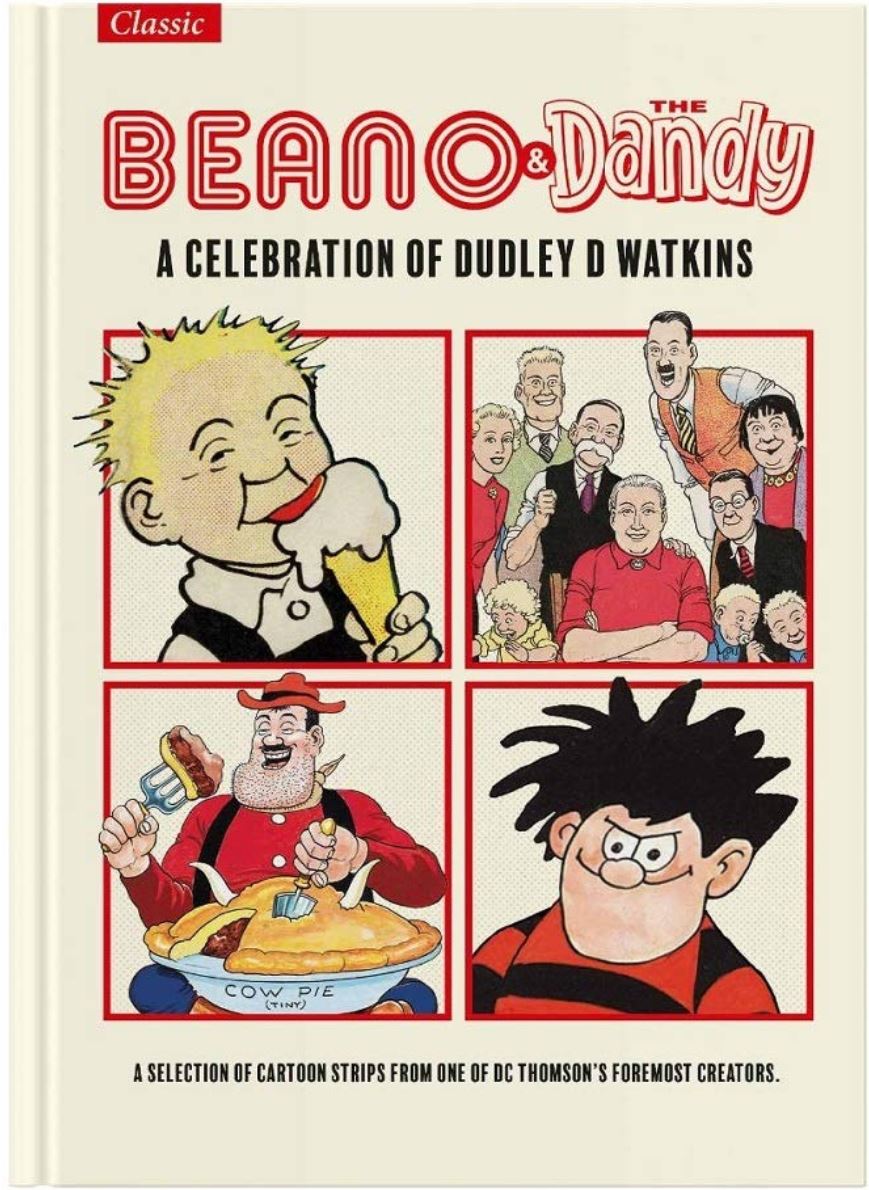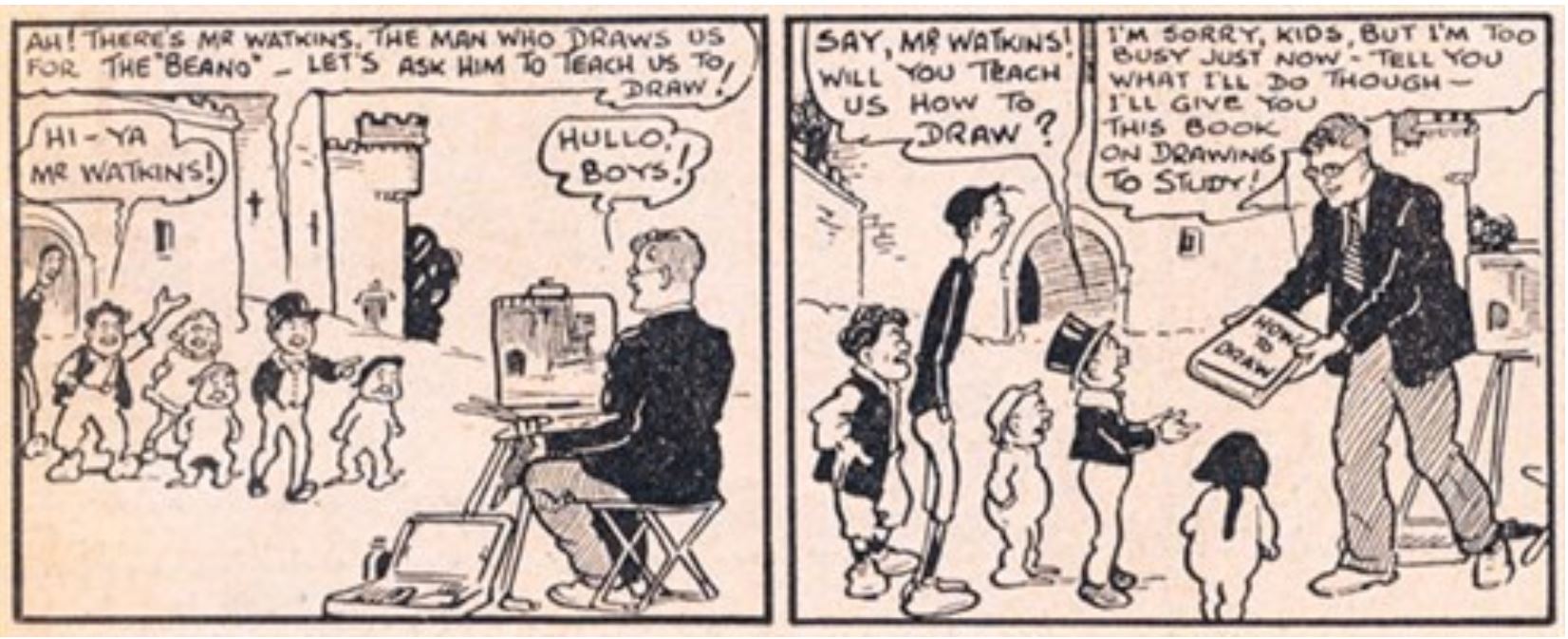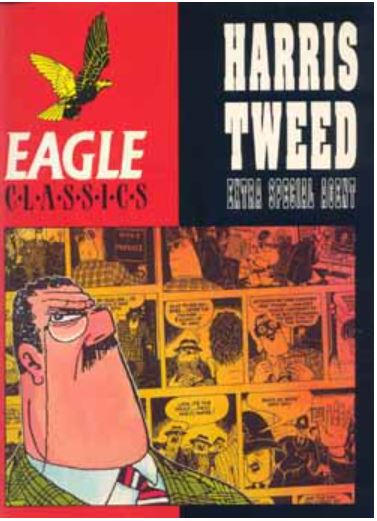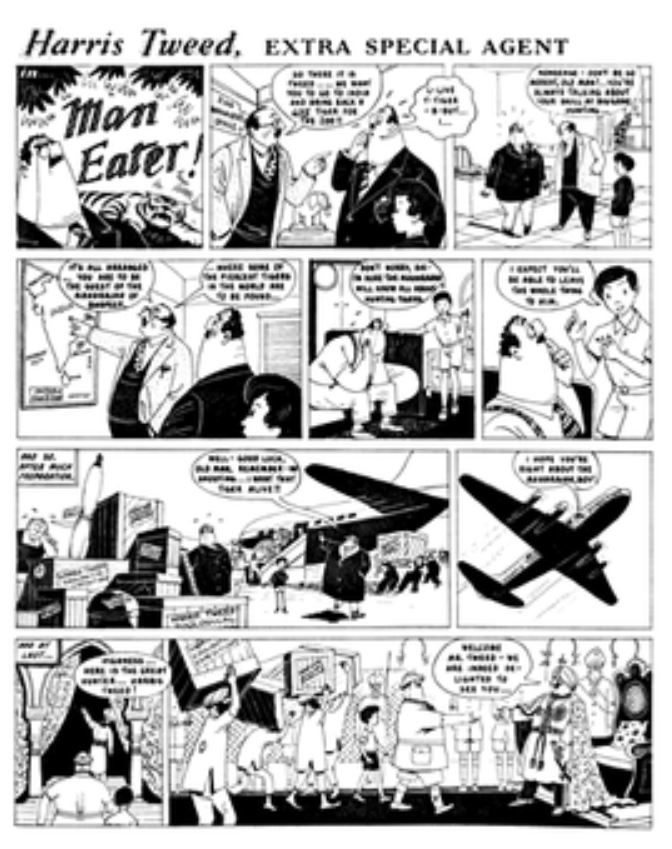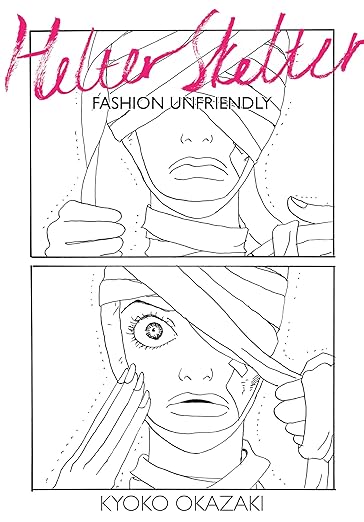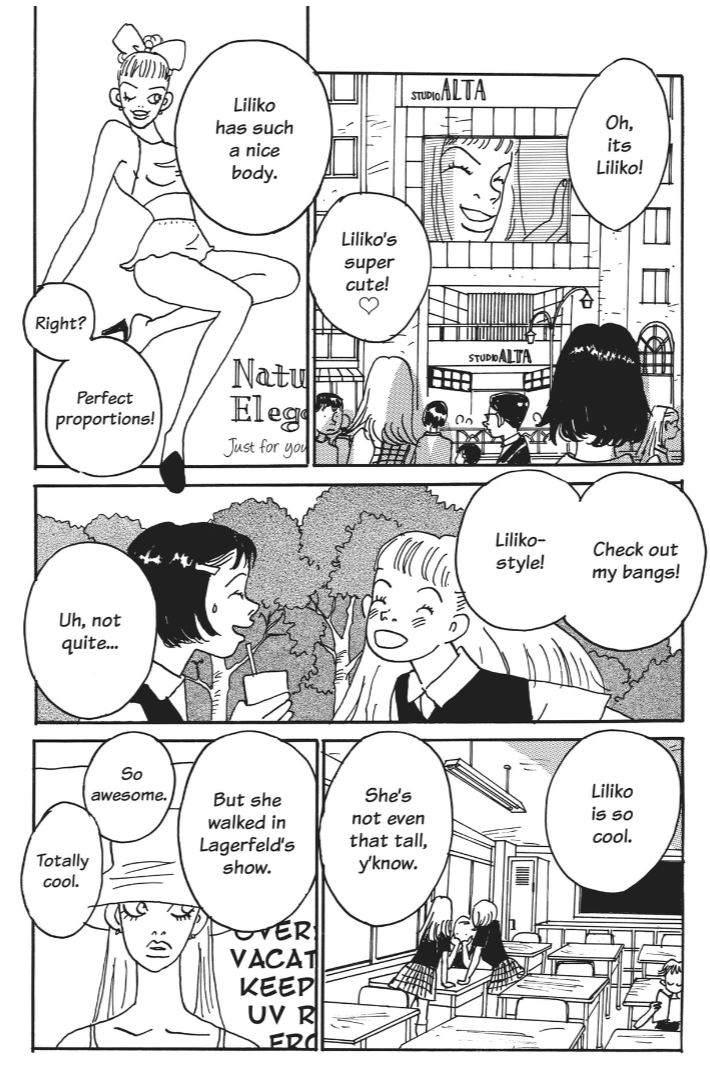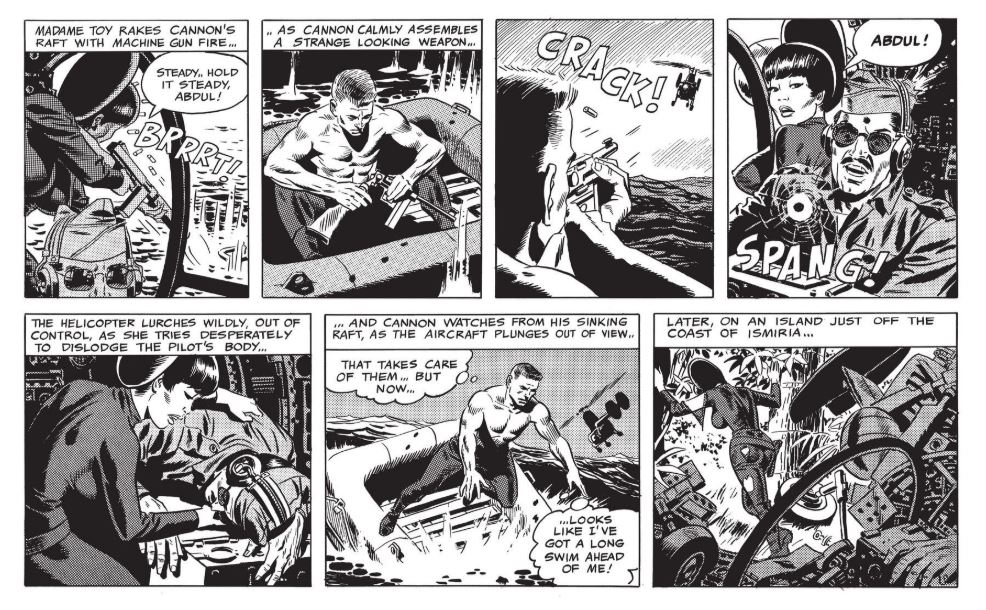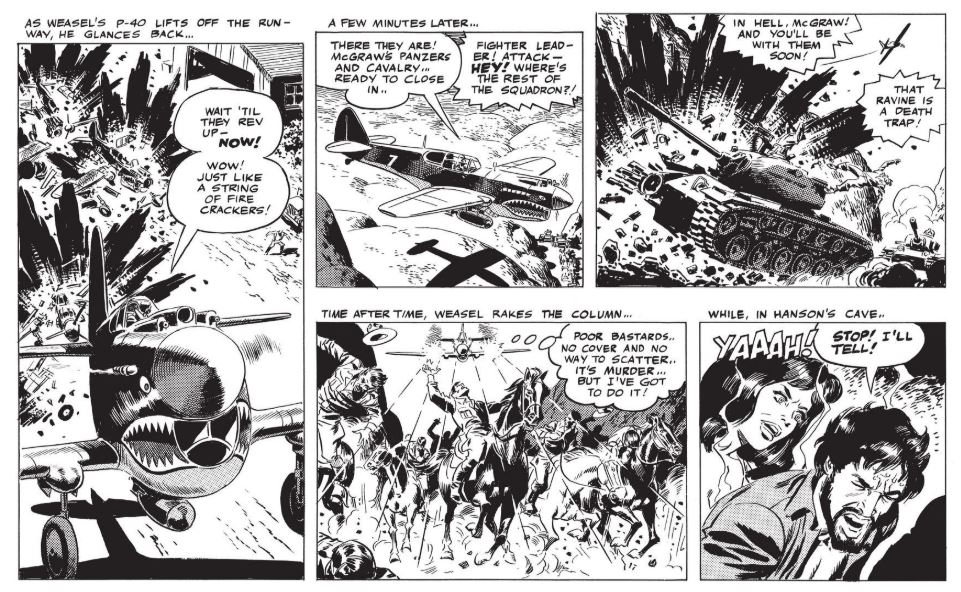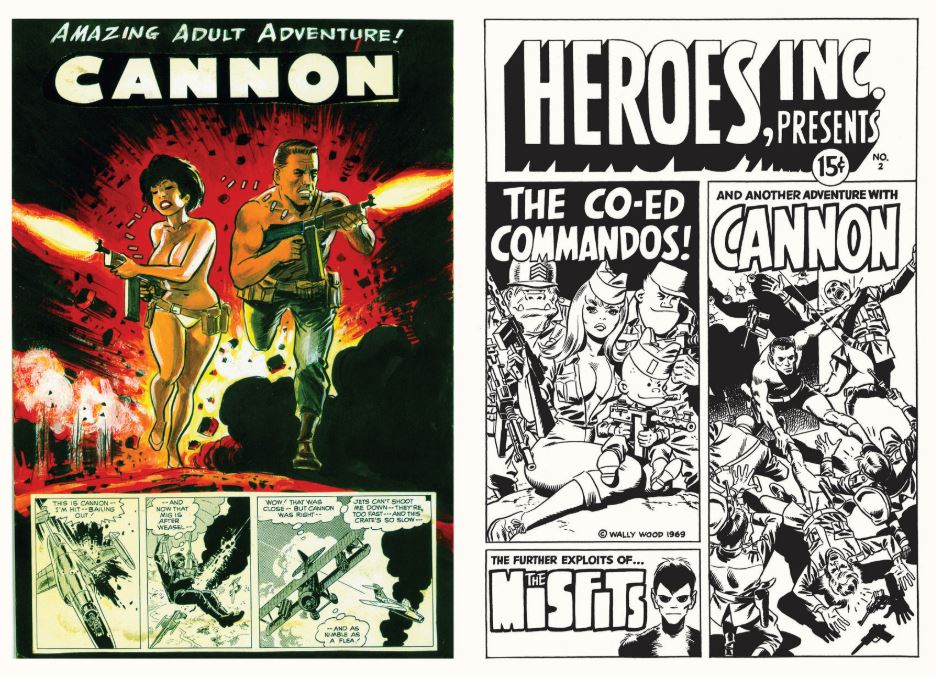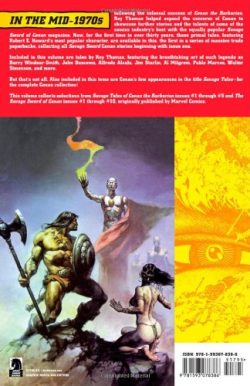
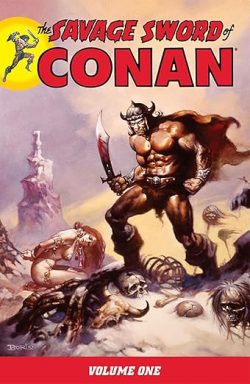
By Robert E. Howard, Roy Thomas, John Jakes, Lin Carter, Barry Windsor-Smith, John Buscema, Pablo Marcos, Gil Kane, Neal Adams, Jim Starlin & Al Milgrom, Alfredo Alcala, Tony DeZuñiga, Alex Niño, Vince Colletta, Steve Gan, Tim Conrad, Yong Montano, Jess Jodloman, “The Tribe”, Rudy Mesina, Freddie Fernandez, Sonny Trinidad, & various (Dark Horse Books)
ISBN: 978-1-59307-838-6 (TPB)
This book includes Discriminatory Content produced in less enlightened times.
During the 1970’s the American comic book industry opened up after more than 15 years of cautiously calcified publishing practises that had come about as a reaction to the censorious oversight of the self-inflicted Comics Code Authority: a publishers’ oversight body created to keep the product wholesome after the industry suffered their very own McCarthy-style Witch-hunt during the 1950s. One of the first literary hardy perennials to be revisited was Horror/Mystery comics and from them came the creation of a new comics genre. Sword & Sorcery stories had been undergoing a prose revival in the paperback marketplace since the release of softcover editions of Lord of the Rings in 1954 and, by the 1960s, revivals of the two-fisted fantasies of Edgar Rice Burroughs, Otis Adelbert Kline, Fritz Lieber and so many more were making huge inroads into buying patterns across the world. Moreover, the old masters had been constantly augmented by modern writers. Michael Moorcock, Lin Carter and many others kickstarted their prose careers with contemporary versions of man against mage against monster. Even so, the undisputed overlord of the genre was Robert E. Howard with his 1930s pulp masterpiece Conan of Cimmeria.
Gold Key had notionally opened the field in 1964 – and created a cult hit – with Mighty Samson. Then in 1966 came Clawfang the Barbarian’ in Thrill-O-Rama #2. Both steely warriors battled in post-apocalyptic technological wildernesses, but in 1969 DC dabbled in previously code-proscribed mysticism with Nightmaster (Showcase #82 -84), following on from the example of CCA-exempt Warren horror anthologies Creepy, Eerie & Vampirella. Marvel tested the waters with barbarian villain – and Conan prototype – Arkon in Avengers #76 (April 1970) and the same month went all-out with short supernatural thriller ‘The Sword and the Sorcerers’ in their own watered-down horror anthology Chamber of Darkness #4.
Written by Roy Thomas and drawn by fresh-faced Barry Smith (a recent Marvel find just breaking out of the company’s still-prevalent Kirby house-style), the tale introduced Starr the Slayer – who also bore no small resemblance to the Barbarian-in-waiting…
Conan the Barbarian debuted with an October 1970 cover-date and – despite some early teething problems, including being cancelled and reinstated in the same month – the comic-strip adventures of Howard’s primal hero were as big a success as the prose yarns they adapted. Conan became a huge hit: a pervasive brand that prompted new prose tales, movies, TV series, cartoon shows, a newspaper strip and all the other paraphernalia of global superstardom.
And American comics changed forever.
In May 1971, Marvel moved into Warren’s territory for a second time, after an abortive attempt in 1968 to create an older-readers, non-Comics Code monochrome magazine: Spectacular Spider-Man. Now, Savage Tales offered stories with stronger tone, mature sexual themes, less bowdlerised violence and partial nudity… and no superheroes. It was the perfect place to introduce Futuristic Femizon Thundra and the macabre Man-Thing whilst offering more visceral vignettes starring the company’s resident jungle-man Ka-Zar and red-handed slayer Conan…
The anthology had an eventful reception and the second issue didn’t materialise until October 1973 under the aegis of Marvel’s parent company Curtis Distribution. Conan starred in the first five issues before spinning off into his own adult-oriented monochrome magazine which debuted in August 1974. Free of all Code-mandated restrictions, The Savage Sword of Conan became a haven for mature storytelling, with top flight artists queuing up to flex their creative muscles.
In 2007, after acquiring the license to publish Conan comics, Dark Horse began gathering Marvel’s Savage Sword canon in a series of 500+ page Essentials-style volumes. Today these stories are mostly available in heavy, costly macho-man-testing Omnibus editions too, but still not any kind of digital edition. Why, Crom? Why?
This first titanic tome – also available as an eBook – collects pertinent material from Savage Tales #1-5 and Savage Sword of Conan #1-10: collectively covering May 1971 through February 1976; a period when the unwashed lout was swiftly becoming the darling of the comics world, and chief scribe Roy Thomas was redefining what American comics could say, show and do…
It all starts here with a much-reprinted classic.
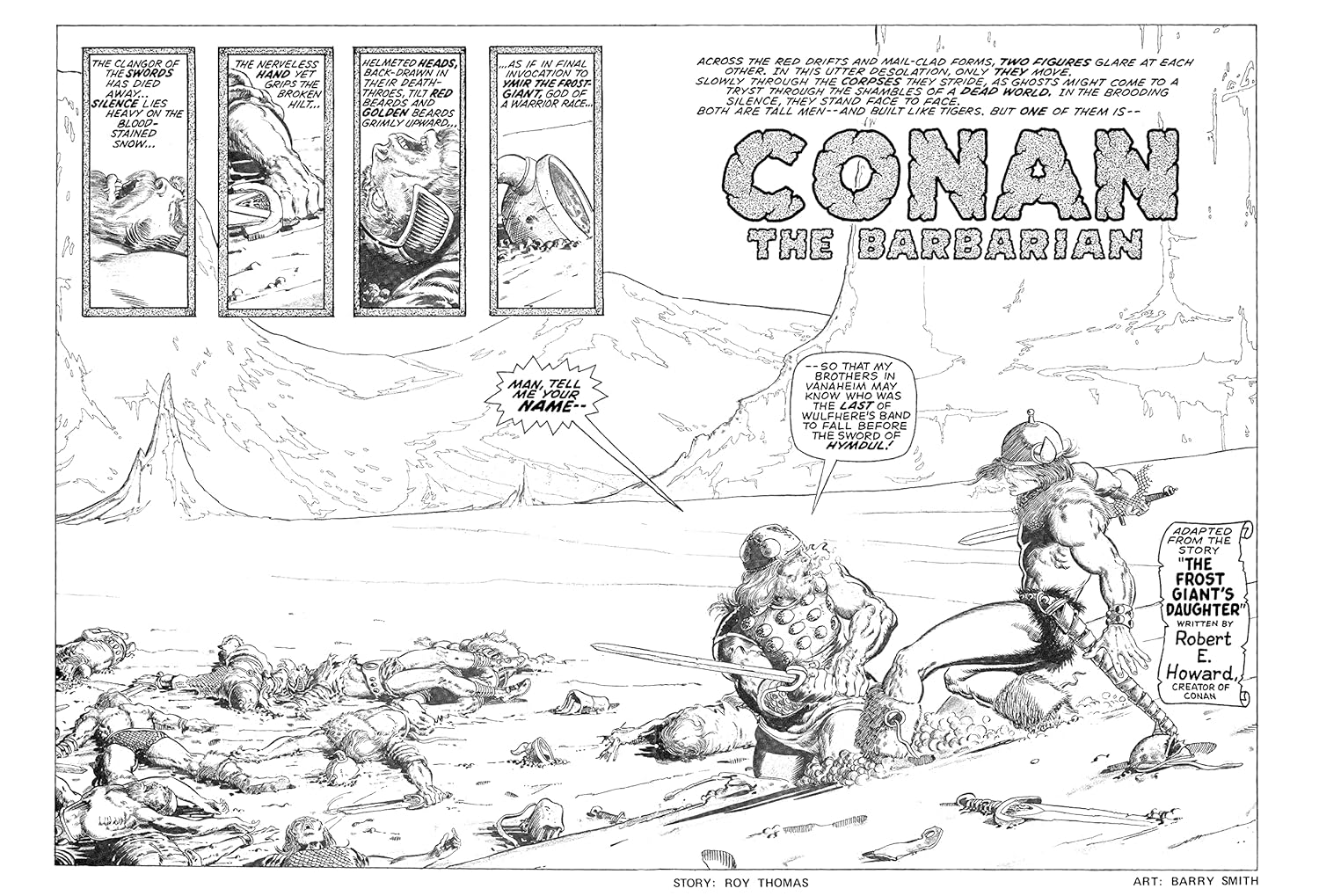
‘The Frost Giant’s Daughter’ is a haunting, racy tale written by Howard, originally adapted in line and tone by Barry Smith for Savage Tales #1. It was later coloured – and adulterated – for the all-ages comic book (#16) as it detailed how a lusty young Cimmerian chased a naked nymph into the icy winter and found himself prey in a trap set by gods or monsters…
By the time Savage Tales returned after a two-year hiatus, Barry Windsor-Smith had pretty much left comics but had agreed to illustrate ‘Red Nails’ one day if he could do it his way and at his own pace. The eventual result was an utter revelation, moody, gory, soaked in dark passion and entrancing in its savage beauty. With some all-but-invisible art assistance from Pablo Marcos this journey into the brutal depths of obsession and the decline of empires is the perfect example of how to bow out at the top of one’s creative game.
The adaptation began in ST #2 as Conan and pirate queen Valeria survive a trek through scorching deserts to fetch up in a vast walled city. Stealing inside they find immense riches casually ignored as the last members of the tribes of Tecuhlti and Xotalanc pick each off or wait for the monsters infesting the place to take them. All too soon, the visitors are embroiled in a simmering, oppressive war of extinction. The third issue completed the ghastly epic as the slow conflict between rival branches of a decadent race explodes into a paroxysm of gore and aroused monsters…
Savage Tales #4 (May 1974) held a brace of tales. ‘Night of the Dark God’ was limned by Gil Kane, Neal Adams, Marcos & Vince Colletta from Howard’s tale The Dark Man. It revealed how Conan came hunting abductors of his childhood first love and found them just as a terrify mystery idol began exerting its own malefic influence on a hall full of already-enraged warriors…
‘Dweller in the Dark’ was Smith’s swansong and saw the wandering warrior become a plaything for lascivious Queen Fatima of Corinthia. Her lusts were matched only by her jealousy, however, and it wasn’t long before she had turned against Conan and tried to feed him to the monster lurking below the city…
The fifth and final Conan appearance in Savage Tales was ‘Secret of Skull River’: a wryly laconic yarn Thomas adapted from a John Jakes plot, illustrated by Jim Starlin & Al Milgrom. The barbarian sell-sword is hired to remove a wizard whose experiments are polluting a town. The reward lusty Conan claims for his murderous services surprises everybody…
From there it was only a short jump to his own mature-themed starring vehicle, but although Savage Sword starred Conan it was initially a vehicle for numerous barbarian themed yarns – such as a serialised reprinting of Gil Kane’s epic Blackmark – and other Howard properties such as Bran Mac Morn or Red Sonja. Those aren’t included here, but are well worth searching out too…
The SSOC experience opens with the first issue and ‘Curse of the Undead-Man’ by Thomas, John Buscema & Marcos, adapted from Howard’s short story Mistress of Death. Here Conan encounters old comrade Red Sonja amongst the fleshpots of “The Maul” in Zamora’s City of Thieves before falling foul of sorcerer Costranno: a mage for whom being chopped to mincemeat is only a minor inconvenience…
Thomas wrote all SSOC Conan material included here: blending adaptations of Howard’s stories – Conan’s and his other fearsome fighting men as well – and such successor authors as Lin Carter or L. Sprague de Camp with original tales. A stunning visual tour de force, ‘Black Colossus’ in #2 was illustrated by Buscema & Alfredo Alcala; detailing how antediluvian priest Natohk returns from death to imperil the kingdom of Princess Yasmela… until stalwart general Conan leads her armies to a victory against armed invaders, uncanny occultism and a legion of devils.
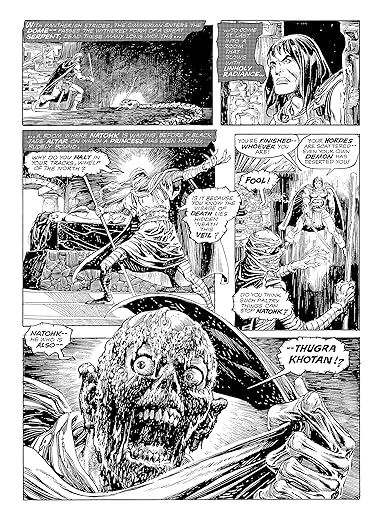
SSOC #3 contributed two tales, beginning with Buscema & Marcos’ ‘At the Mountain of the Moon-God’ with Conan high in Yasmela’s court and attempting to head off the kingdom’s annexation from encroaching neighbours and encountering mountain-dwelling bandits and a demon pterosaur. The issue concluded with ‘Demons of the Summit’ – an adaptation of Bjorn Nyberg & de Camp’s People of the Summit – turned into comics by Thomas & Tony DeZuñiga as an encounter with more high-living brigands brings the Cimmerian into conflict with a dying race of wizards who want his latest curvy companion to mother their next generation…
Issue #4 features Howard’s ‘Iron Shadows on the Moon’, realised by Buscema & Alcala. Having lost a war whilst leading a Kozak horde, Conan flees into the Vilayet Sea with escaped slave Olivia after killing enemy general Shah Amurath. On an uncharted island they then encounter ancient statues which come to life at the moon’s touch. The bloodthirsty horrors fall upon a band of pirates watering on the island and after leading them to victory against the supernatural fiends Conan manoeuvres himself into the captain’s role and begins a life of freebooting piracy…
Howard’s ‘A Witch Shall Be Born’ took up most of Savage Sword of Conan #5. Illustrated by Buscema and The Tribe – a loose association of Marvel’s Filipino art contingent (DeZuñiga; Steve Gan; Rudy Mesina; Freddie Fernandez and others) it saw virtuous Queen Taramis replaced by her demonic twin sister Salome, who debauches and ravages the kingdom of Kauran whilst her accomplice Constantius has her guard captain Conan crucified. After (almost) saving himself, the Cimmerian recuperates with desert-raiding Zuagirs, and after ousting their brutal chieftain Olgerd Vladislav returns to save Taramis and revenge himself upon the witch…
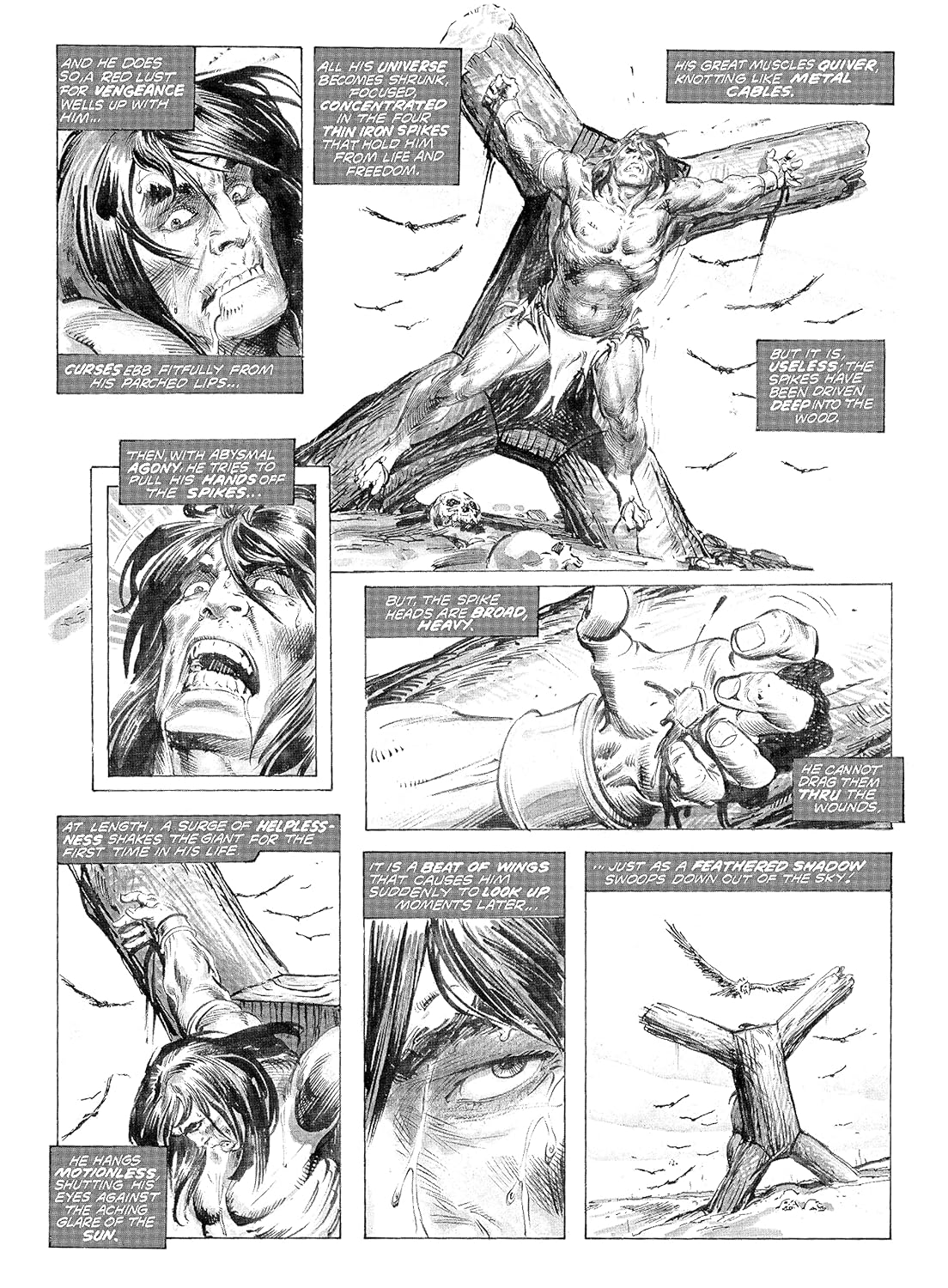
The epic is balanced by two shorter tales in the next issue. ‘The Sleeper Beneath the Sands’ is a Thomas original limned by Sonny Trinidad revealing how Olgerd encounters a caravan of clerics en route to pacify an elder god buried since time immemorial beneath the desert. The rejected bandit-lord senses a chance for revenge but soon regrets allowing the beast to wake and luring Conan into its path…
Howard’s Celtic reincarnation thriller ‘People of the Dark’ is radically adapted by Thomas and stunningly illustrated by master stylist Alex Niño next as, in modern times, Jim O’Brien plots to kill rival Richard Brent to win the hand of Eleanor. However, a fall into an ancient cavern transports the would-be killer into antediluvian prehistory where – as Conan – he battles the debased descendants of things which were once men. In that forgotten hell a burden is placed upon him and, once returned to the present, O’Brien faces another monster and pays a millennial debt…
‘The Citadel at the Center of Time’ by Thomas, Buscema & Alcala in #7 finds the Cimmerian leading desert-raiding Zuagirs and attacking a caravan only to be confronted by a sabretooth tiger. After despatching the wanton killer, Conan learns from the surviving merchants of a great ziggurat with vast riches and only attendant priests to guard them. Ever-needful of loot to placate his greedy followers, Conan leads an expedition against the eerie edifice but soon finds himself captured and offered up as a sacrificial tool to time wizard Shamash-Shum-Ukin and battling dinosaurs, beasts and brutes from many ages before finally settling his score with the time-meddler…
SSOC #8 offered many short sharp shockers beginning with ‘The Forever Phial’, illustrated by Tim Conrad doing his best Windsor-Smith riff. Here immortal wizard Ranephi desires to end his interminable existence and manipulates a certain barbarian into helping him out. The main part of the issue continues Thomas & Kane’s adaptation of Howard’s King Conan novel The Hour of the Dragon, which had begun in Giant-Size Conan but foundered as Marvel ended their oversized specials line. Inked by Yong Montano, ‘Corsairs Against Stygia’ resumes the tale with shanghaied King Conan leading a slave revolt on the ship he’s been abducted upon. Back in Aquilonia, a cabal of nobles backed by Stygian wizard Thutothmes has usurped his throne…
Having taking control of the ship Conan opts to infiltrates the evil empire to rescue the stolen talisman known as the Heart of Ahriman and end the conflict…
Wrapping up this segment is Lin Carter’s evocative poem ‘Death Song of Conan the Cimmerian’ adapted by Thomas and Jess Jodloman…
Issue #9 offered another new tale by Thomas & Marcos as Conan’s Zuagirs raid another priest-packed caravan and come under the diabolical influence of a small statue with great power. ‘The Curse of the Cat-Goddess’ corrupts, divides and promises many great things: causing the doom of many brothers in arms before the iron-willed Cimmerian ends its seductive threat. The adaptation of The Hour of the Dragon concludes in this hefty tome’s final chapter as SSOC #10 reveals how ‘Conan the Conqueror’ (rendered by Buscema & The Tribe) sneaks into Stygian capitol Khemi to defeat snake-worshipping priests, immortal vampire queen Akivasha and Thutothmes’ inner circle, before stealing back the Heart of Ahriman and heading home to occupied Aquilonia to destroy wizard king Xaltotun and his human lackeys, and reclaim his stolen throne…
With a painted covers gallery – reproduced only in black-&-white here – by Buscema, Marcos, John Romita, Adams, Boris Vallejo, Mike Kaluta, Niño, Frank Magsino, Frank Brunner & Bob Larkin and pin-up/frontispiece art by Marcos, Adams & Esteban Maroto, this weighty collection provides a truly epic experience for all fans of thundering mystic combat and esoteric adventure.
If the clash of arms, roar of monsters, unwise gloating of connivers and destruction of empires sets your pulse racing and blood rushing, this titanic tome is certainly your cup of mead. There are plenty of Thrones in peril, but this all-action extravaganza of sex, slaughter, snow, sand and steel is no Game. Get it and see what real intrigue and barbarism look like…
Savage Sword of Conan® and © 2007 Conan Properties International, LLC. All rights reserved.

